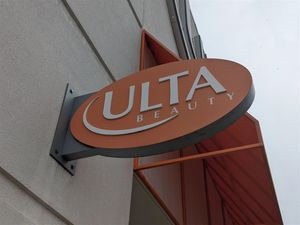– Oral presentation highlights potential utility of vantictumab for treatment of autosomal dominant osteopetrosis type 2 (ADO2) –
– Poster documents benefit of MMP9 inhibition in a mouse model of non-hereditary heterotopic ossification (NHHO) –
– Company plans IND filing for vantictumab in 2026 –
āshibio, a privately held, clinical-stage biotechnology company developing novel therapeutics for the treatment of bone and connective tissue disorders, presented preclinical data that showcase the promise of two of the company’s investigative antibody therapies for the treatment of rare bone diseases. In an oral presentation at the American Society for Bone and Mineral Research (ASBMR) annual meeting and accompanying Rare Bone Disease Association (RBDA) Symposium in Seattle, Wash., researchers reported that vantictumab appears to correct the impaired osteoclastic bone resorption that characterizes autosomal dominant osteopetrosis type 2 (ADO2), as observed in a mouse model of the disease. In a poster presentation at ASBMR, investigators presented data demonstrating the potential benefit of matrix metalloproteinase-9 (MMP9) inhibition in a mouse model of non-hereditary heterotrophic ossification (NHHO), an approach that supports the clinical rationale for use of andecaliximab to treat this severely debilitating condition.
“The data we presented at ASBMR highlight the therapeutic potential of our first-in-class investigative antibodies vantictumab and andecaliximab in disease-relevant mouse models,” said Victoria Smith, PhD, Chief Scientific Officer of āshibio. “We are excited to advance these antibodies into clinical development for ADO2 and NHHO respectively, both of which are areas of high unmet need due to the lack of approved therapies.”
Oral presentation highlights therapeutic action of vantictumab in mouse model of ADO2
ADO2, also known as Albers-Schönberg disease, is a genetic disorder caused by reduced function of osteoclasts. Impaired osteoclast function results in dense, brittle bone and leads to complications such as multiple fractures, poor bone healing, low blood counts (due to bone marrow sequestration), and painful nerve compression. The most common form of osteopetrosis, ADO2 results from a mutation in the chloride channel 7 (CLCN7) gene and has a reported incidence of 1 in 20,000 births.1 It is estimated that there are between 10,000 and 25,000 people living with ADO2 in the United States.
“ADO2 results from impaired osteoclast resorption, resulting in extremely dense but brittle bones,” explained Michael Econs, MD, Distinguished Professor and Director of the Division of Endocrinology and Metabolism at Indiana University School of Medicine. “Vantictumab’s mechanism of action offers a rational, targeted way to address this function. The clinical data from previous trials clearly show increased bone turnover, which supported the hypothesis for testing vantictumab in our mouse model of ADO2. In the three-month study, we reduced bone volume per total volume below that of the wild type. This allowed us to reduce the dose of vantictumab in our one-month study, where we successfully rescued the bone phenotype. I am excited to see this promising investigational compound continue to advance through clinical development.”
In an oral presentation at ASBMR2, Imranul Alam PhD, Associate Research Professor of Medicine in the Division of Endocrinology and Metabolism, Indiana University School of Medicine, described how 5- and 20-mg/kg doses of vantictumab, a monoclonal antibody that selectively binds to certain frizzled (Fzd) receptors and inhibits Wnt signaling pathways3, significantly decreased areal bone mineral density for the whole body, femur, and spine in a knock-in mouse model of ADO. He noted that higher doses and longer duration of therapy produced more pronounced effects, particularly in terms of reducing cortical bone volume, bone area over total area, cortical thickness, and polar moment of inertia, an indicator of bone strength; these structural and biomechanical properties were preserved in mice treated with the lowest dose of vantictumab (0.5 mg/kg) for one month. The results demonstrate that vantictumab rescued the osteopetrosis bone phenotypes in the ADO mice and support the ongoing clinical investigation of this therapy in patients with ADO2.
āshibio intends to file an investigational new drug (IND) application in 2026 to advance vantictumab into clinical trials in patients with ADO2.
Poster demonstrates efficacy of MMP9 inhibition in NHHO mice, suggesting potential role for andecaliximab
Heterotopic ossification (HO) is a condition that causes abnormal bone formation in muscles, tendons, ligaments, and other soft tissues. The non-hereditary form of HO can occur in people who have experienced spinal cord injury (SCI), traumatic brain injury (TBI), hip arthroplasty, burns, blast injuries, and other forms of trauma. NHHO affects approximately 20% of individuals following major hip surgery, and up to 30% of those following SCI and TBI.4
Andecaliximab is a humanized antibody that specifically inhibits the MMP9 enzyme. MMP9 is highly expressed in HO lesions and was recently characterized as a critical regulator of HO in fibroplasia ossificans progressive (FOP)5, a genetic disease characterized by severe HO starting in early childhood.
In the poster presentation at ASBMR6, āshibio researchers evaluated the potential benefit of MMP9 inhibition as a therapeutic strategy using MMP9-deficient (knockout) mice in a burn-tenotomy model of NHHO. The data demonstrated that MMP9-deficient mice were significantly protected against formation of HO as compared to a control group (p<0.0001). Both groups of mice recovered similarly from the burn injury and tenotomy (tendon-cutting), indicating that absence of MMP9 did not impair wound healing. These data support the potential benefit of MMP9 inhibition in NHHO, according to the researchers. āshibio recently announced dosing of the first participant in the ANDECA-HO study, a Phase 1b trial of andecaliximab in patients with SCI who are at risk of developing HO.
About āshibio
āshibio is a privately held, clinical-stage biotechnology company developing a pipeline of novel therapeutics for the treatment of bone disorders. Founded in 2022, āshibio exited stealth mode in June 2024 with $40 million in seed and Series A financing. The company has two investigational therapies for rare bone disorders: andecaliximab for various types of heterotopic ossification (HO), a pathological condition characterized by abnormal bone formation in muscle and soft tissues, and vantictumab for the treatment of autosomal dominant osteopetrosis type 2 (ADO2), a genetic disorder caused by reduced function of osteoclasts. āshibio initiated a Phase 2/3 trial of its lead asset, andecaliximab, in patients with fibrodysplasia ossificans progressiva (FOP), a rare genetic disorder characterized by progressive HO. The company has also initiated a development program in non-hereditary heterotopic ossification (NHHO), a severely disabling condition for which there are no approved therapies. The first study in the NHHO program is a Phase 1b trial of andecaliximab in patients with spinal cord injury at risk of HO. For more information, visit www.ashibio.com.
1 Wu CC, Econs MJ, DiMeglio LA, et al. Diagnosis and management of osteopetrosis: consensus guidelines from the Osteopetrosis Working Group. J Clin Endocrinol Metab. 2017 Sep 1;102(9):3111-3123. doi: 10.1210/jc.2017-01127
2 Alam I, Smith V, Gerard-O’Riley R, et al. Vantictumab, an anti-FZD antibody, rescues the osteopetrotic bone phenotype in heterozygous ADO mice. Presented at American Society for Bone and Mineral Research (ASBMR) Annual Meeting, Seattle, Wash., September 7, 2025, Presentation number SUN-582
3 Diamond JR, Becerra C, Richards D, et al. Phase Ib clinical trial of the anti-frizzled antibody vantictumab (OMP-18R5) plus paclitaxel in patients with locally advanced or metastatic HER2-negative breast cancer. Breast Cancer Res Treat. 2020 Aug 14;184(1):53–62. doi: 10.1007/s10549-020-05817-w
4 Foley KL, Hebela N, Keenan MA, Pignolo RJ. Histopathology of periarticular non-hereditary heterotopic ossification. Bone 2018 Apr;109:65-70.
5 Lounev V. Groppe JC, Brewer N, et al. Matrix metalloproteinase=9 deficiency confers resilience in fibrodysplasia ossificans progressive in a man and mice. J Bone Miner Res. 2024 May 2;39(4):382-398. doi: 10.1093/jbmr/zjae029.
6 Smith V, Lemire I, Bhargava P. MMP9 deficiency protects against trauma-induced heterotopic ossification. Presented at American Society for Bone and Mineral Research (ASBMR) Annual Meeting, Seattle, Wash., September 5, 2025, Presentation number SAT-290.
View source version on businesswire.com: https://www.businesswire.com/news/home/20250908000681/en/
Contacts
Media Contact:
SmithSolve
Corey Carmichael
(862) 260-7929
corey.carmichael@smithsolve.com





